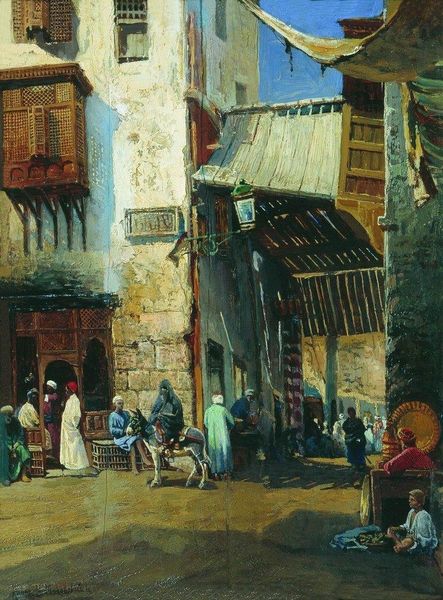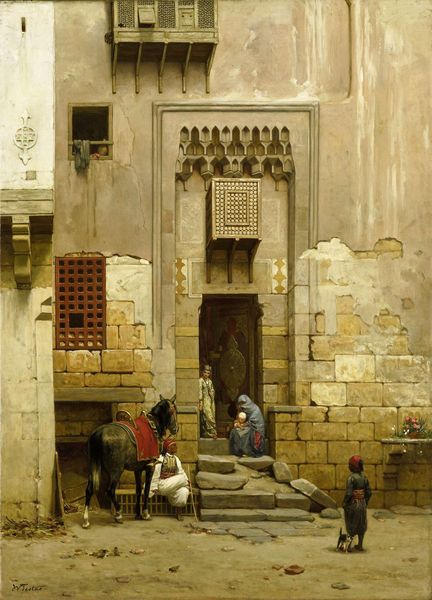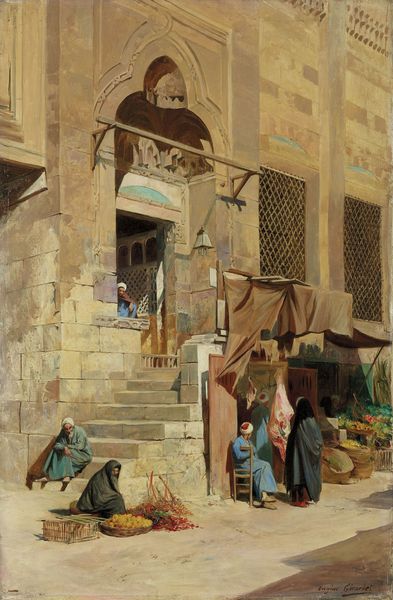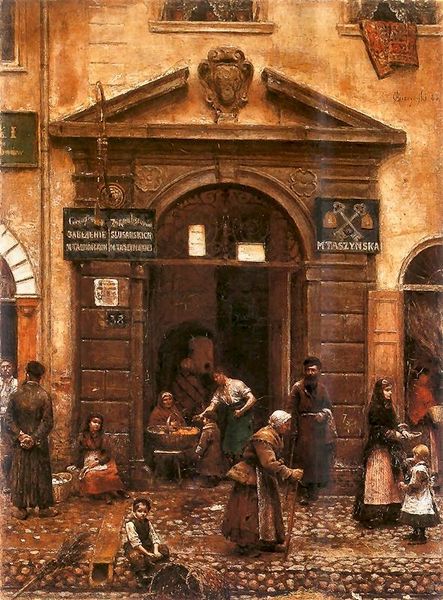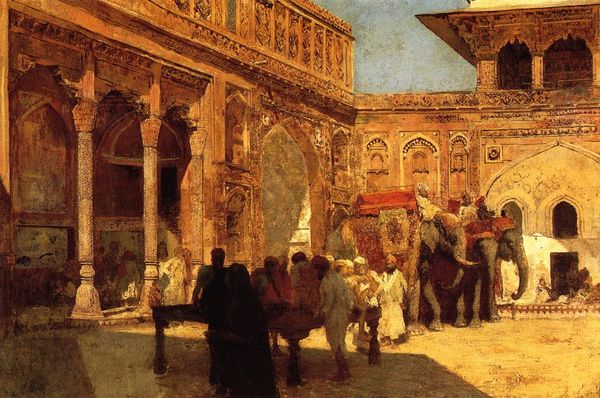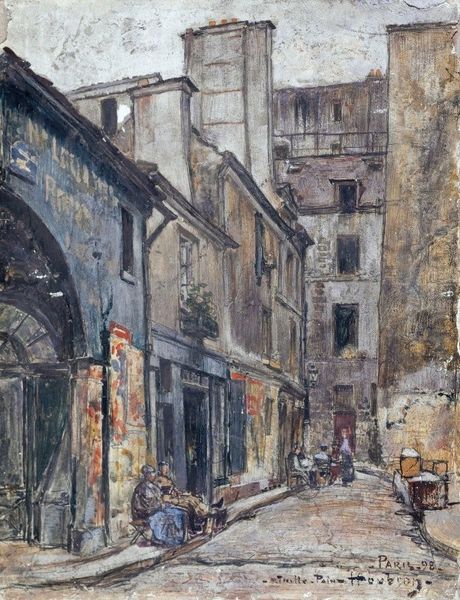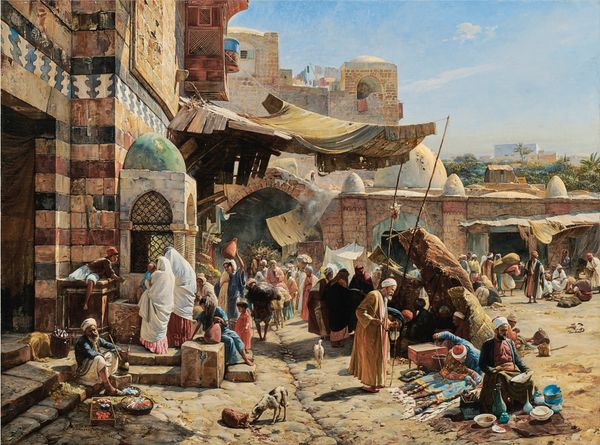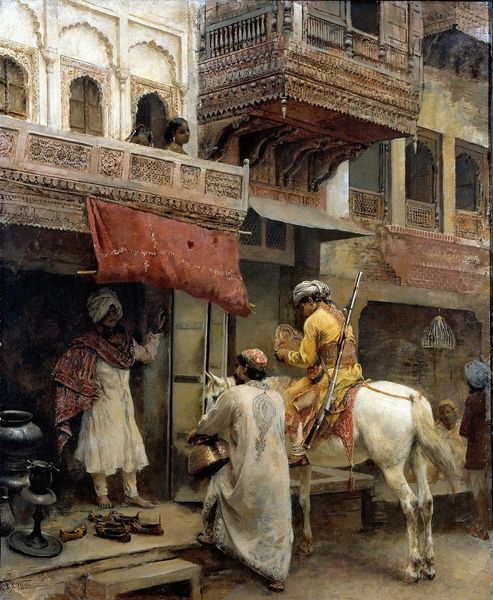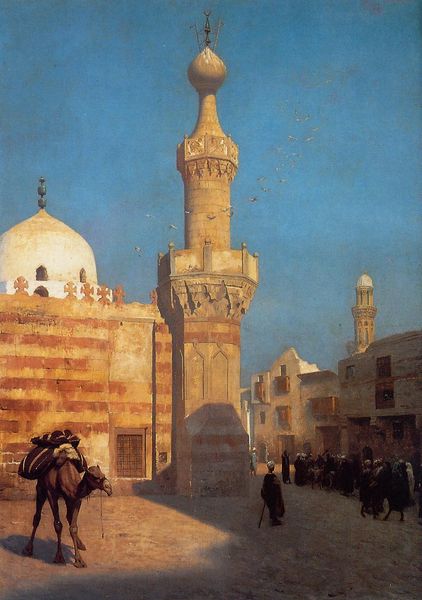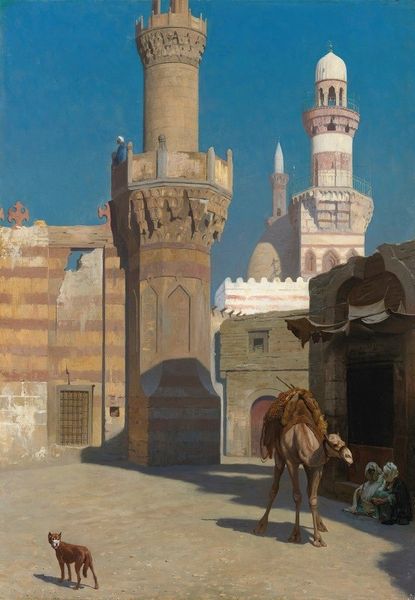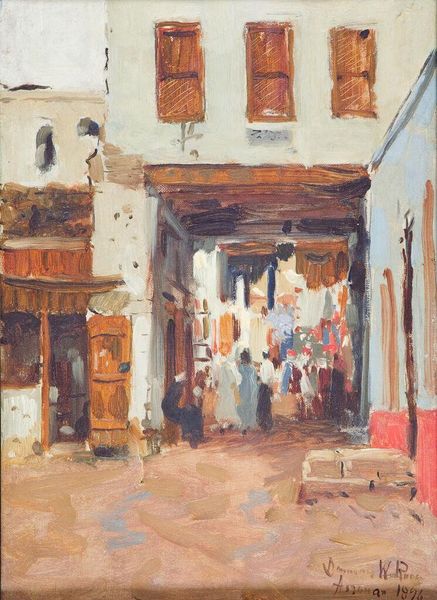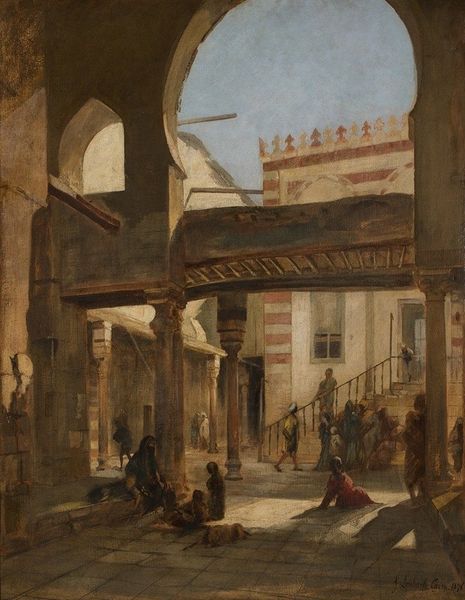
painting, oil-paint
#
painting
#
street view
#
oil-paint
#
landscape
#
holy-places
#
oil painting
#
urban art
#
orientalism
#
cityscape
#
islamic-art
#
genre-painting
#
history-painting
#
street
#
realism
Copyright: Public domain
Editor: So, this is Cesare Biseo's "Offering of the Zakat," painted in 1870 using oil on canvas. I'm immediately drawn to the bustling street scene and the architectural details, but I'm curious about what this specific offering, the Zakat, represents in the context of the painting. What do you see in this piece? Curator: This piece pulsates with layers of meaning, all conveyed through potent visual symbolism. The Zakat, one of the five pillars of Islam, is symbolized here not just as charity, but as purification and communal responsibility. Notice how Biseo positions the architectural details of the mosque – its archways, the dome – as a backdrop, almost a constant reminder of the spiritual framework. Editor: That's a great point about the architecture framing the action. I hadn't really thought about how the physical space contributes to the narrative. Curator: The street itself, with its chaotic energy and diverse figures, symbolizes the social body that both gives and receives. Even the clothing – the colors, textures, the way they drape – contributes to the visual vocabulary. The robes speak to social status and roles within the community. What emotional responses do the colors evoke in you? Editor: Now that you mention the colors, there's a muted quality to them...earth tones, creams. Maybe it suggests humility, a lack of ostentation? Curator: Precisely. And consider how Biseo uses light and shadow. Where does the light fall, and on whom? Light often denotes blessing, revealing a hierarchy of giving. Ask yourself, what narrative is being created with shadow, not just light? It obscures and may speak of the forgotten. Editor: That makes sense. I initially saw just a crowded street, but now I’m realizing how much symbolic weight each element carries. Curator: Indeed. Visual literacy is about unlocking the language embedded in images. Hopefully, with a deeper understanding, you're better able to decode those narratives. Editor: Absolutely. I'm walking away from this conversation seeing the artwork as less of a static depiction and more of an active representation of community, faith, and cultural values. Thank you!
Comments
No comments
Be the first to comment and join the conversation on the ultimate creative platform.
